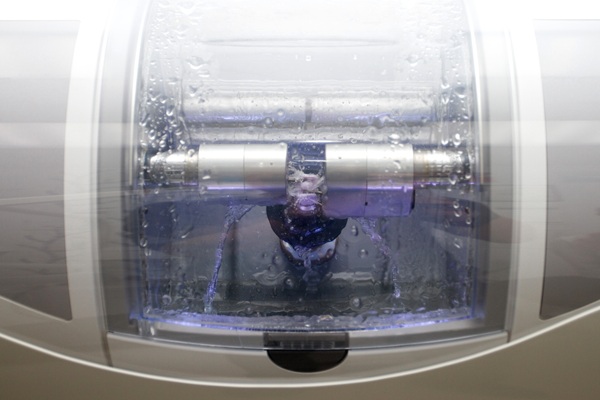 Have you always wanted a picture-perfect smile? It is never too late. Invisalign® and adult braces have helped many people of all ages get the smile of their dreams. Both of these treatment methods have unique sets of benefits. We can help you choose which is best for your needs.
Have you always wanted a picture-perfect smile? It is never too late. Invisalign® and adult braces have helped many people of all ages get the smile of their dreams. Both of these treatment methods have unique sets of benefits. We can help you choose which is best for your needs.
How Invisalign works
Invisalign straightens the teeth through a series of clear, flexible plastic aligners. There are no metal brackets, wires, or rubber bands involved. Patients will switch aligners every one to two weeks to progress through treatment. Each set of aligners shifts the teeth closer to being in proper alignment. Patients must wear their aligners for at least 20 to 22 hours a day for the best results. That means only taking them off briefly to eat, drink, brush, floss, or play sports.
Clear aligners are best at correcting mild to moderate misalignments or dental malocclusions. They may correct overbites, underbites, crossbites, gaps in the teeth, and crooked teeth.
Why choose Invisalign?
Many patients choose Invisalign because the trays are clear, making it difficult for others to notice them. This treatment method is also generally faster than braces, with an average treatment time of 12 to 18 months. Finally, minimal lifestyle changes are required, as patients can eat and drink whatever they want as long as they remove the aligners first.
Understanding adult braces
Braces are a trusted teeth straightening treatment that has been around for hundreds of years. They become more comfortable and efficient with every advancement in orthodontics. Today, adult braces come in many forms:
- Metal braces (traditional braces): These braces use metal brackets, wires, and rubber bands placed on the fronts of the teeth to straighten them.
- Self-litigating braces: These braces are similar to metal braces but use metal clips instead of rubber bands.
- Ceramic braces: A more discreet option than metal braces, these braces use tooth-colored brackets and wires to straighten the teeth.
- Lingual braces: The most discreet braces option uses metal brackets and wires placed on the backs of the teeth to straighten them.
Each of these types of braces has its own treatment time. While some are more discreet than others, none are as discreet as Invisalign. That said, adult braces are the best option for severe malocclusions.
The bottom line
Whether a patient chooses Invisalign or a type of adult braces will depend on several factors. Most patients find that the benefits of Invisalign outweigh those of adult braces, but every patient is different. It is necessary to consider aesthetics, lifestyle, and the severity of one’s malocclusion before making a decision. Patients also need to consider the cost and insurance coverage. They will need to contact their insurance provider to know possible options.
Get more information
If you want to learn more about teeth straightening solutions for adults, consult our San Francisco dental team. We can discuss the benefits of Invisalign and braces in detail, helping you choose the best option for your needs and budget. Call 415-493-9143 today to schedule a consultation appointment.
Request an appointment or call Aesthetic Dentistry of Noe Valley at 415-493-9143 for an appointment in our San Francisco office.
Related Posts
Invisalign® aligners offer a discreet and convenient alternative to traditional braces. These aligners allow individuals to straighten their teeth without the hassle of wires and brackets. However, as with traditional braces, it is important to properly care for them to ensure their effectiveness and longevity throughout your treatment. Here are some essential tips to help…
Invisalign® has become revolutionary in orthodontics, proving an effective way to straighten teeth discreetly. The system uses smart technology and aligners to shift the teeth in as little as six to 18 months. While many are aware of this fact, there are specific dental conditions known as malocclusions that this revolutionary system is known to…
Invisalign® has emerged as one of the most popular alternatives to traditional metal braces. These teeth-straightening devices are virtually invisible when worn, as their name suggests, yet they can fix many of the teeth alignment issues braces have historically been used for.Examples of orthodontic issues Invisalign can be used to fix include crooked, crowded, poorly…


